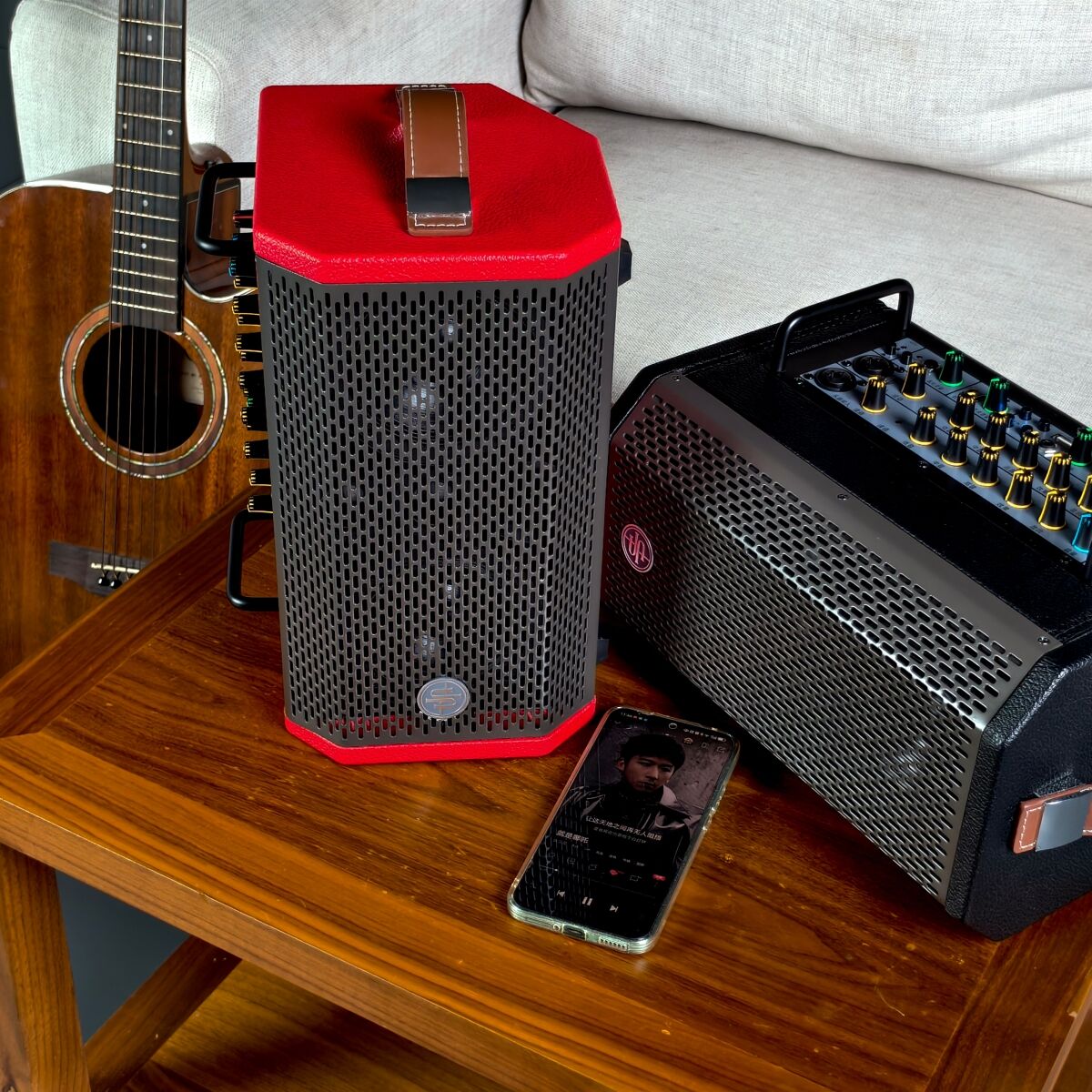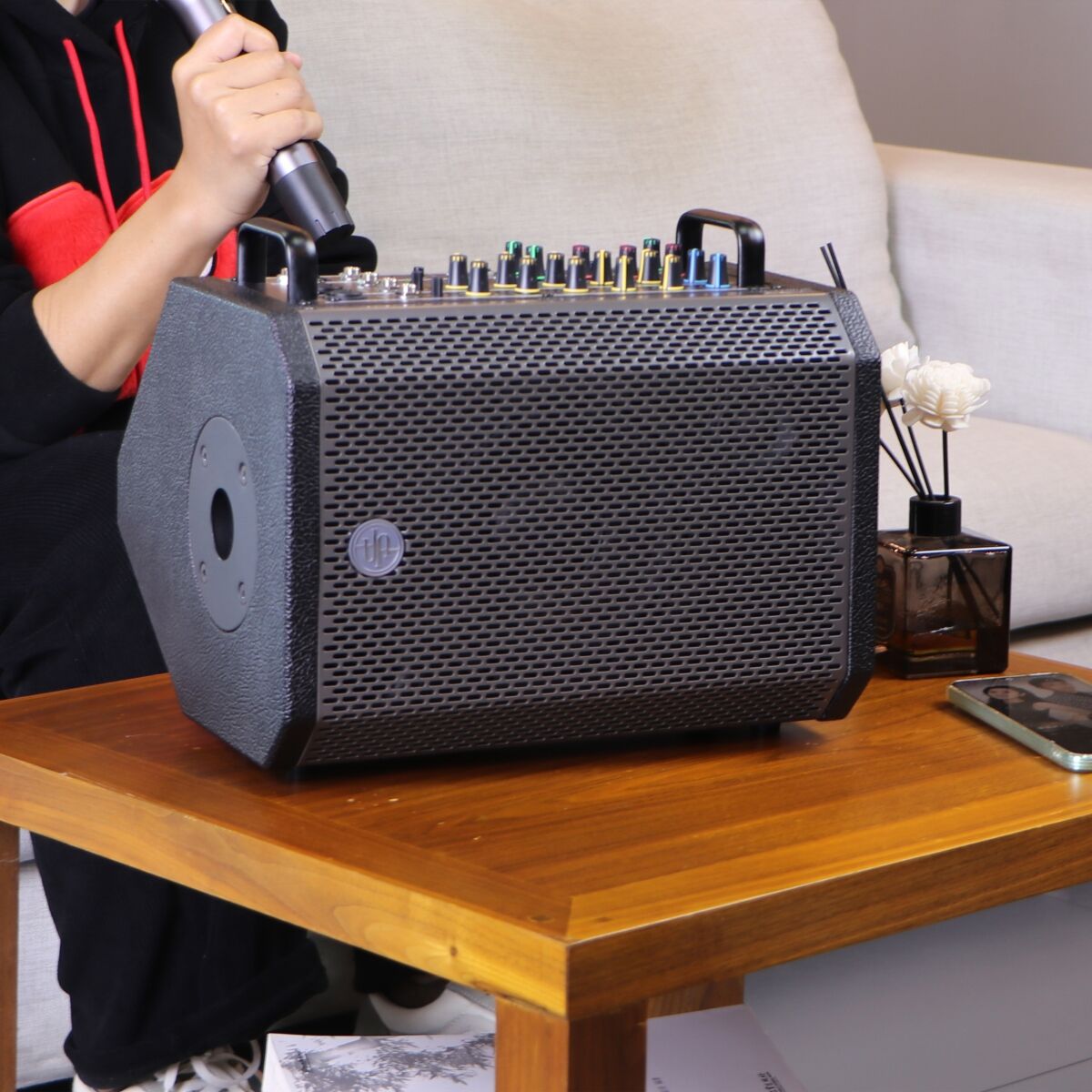Why Outdoor Audio Systems Require Special Features
Unique Environmental Challenges
Regular audio gear just won't cut it when installed outside where Mother Nature throws everything at them. The big problems come from temperature swings, water getting everywhere, and dirt finding its way into all the wrong places. Take moisture for example it doesn't just ruin speakers over time, it actually causes short circuits and rust spots that nobody wants to deal with later. Dust is another nightmare because it blocks air vents and gets stuck inside where it wears down moving parts. Then there's wind messing with how sounds travel through the air, making even good systems sound terrible on a breezy day. That's why manufacturers spend so much time developing outdoor specific models with sealed enclosures, weather resistant materials, and directional speaker placements. Without this kind of engineering, most audio setups would fail within weeks of being exposed to real world conditions.
Balancing Performance and Durability
Getting the right mix of good sound and lasting durability matters a lot when it comes to outdoor audio systems. Systems need to deliver great audio while standing up to all sorts of weather and environmental challenges. Most companies put their products through extensive testing before releasing them to market. This testing usually involves exposing equipment to extreme temperatures, moisture, and physical stressors similar to real world conditions. Many systems end up with official certifications from recognized industry bodies after passing these tests, something customers can look for when shopping around. Manufacturers also tend to build these systems using tough materials like weather resistant plastics and corrosion proof metals. Some even incorporate special design features that help protect sensitive components from rain, dust, and UV damage. All these efforts mean the speakers and amplifiers can handle whatever Mother Nature throws at them without compromising on sound quality.
Overcoming Open Space Acoustics
Outdoor audio systems face all sorts of tricky acoustic problems when installed in open spaces. Designers have to think really hard about where to put speakers and how sound spreads out so people get good coverage everywhere. That's why many professionals now rely on special software to model how sound travels. These tools let them see where gaps might happen before installation even starts. With this tech, it becomes possible to create audio experiences that feel balanced and rich, something that was almost impossible in big open areas before. The result? Music and announcements actually reach those far corners of parks or stadiums instead of disappearing into thin air. This makes a world of difference for anyone trying to enjoy events outdoors without fighting bad sound quality.
Weatherproof Design: Defending Against the Elements
IP Ratings for Water and Dust Resistance
If someone wants to install audio equipment outside, they really need to get familiar with those IP or Ingress Protection ratings. Basically, these numbers tell how well a speaker or amplifier stands up against dirt and moisture, which obviously matters a lot when stuff is sitting outdoors. Take IP65 for example, that means no dust gets inside and it can handle being sprayed by water from a hose. IP67 goes even further, making sure nothing gets into the device at all and letting it survive being submerged under water for short periods, maybe around a meter deep. Most companies will list these ratings clearly on product specs sheets so buyers know what kind of protection they're getting. Choosing the right rating makes sense because nobody wants their expensive gear ruined by rain or humidity. A properly rated system lasts much longer through all sorts of bad weather situations.
UV-Resistant Materials for Sun Protection
Most outdoor speakers on the market today use materials that stand up to UV rays so they don't get damaged when left out in the sun for long periods. Why does this matter? Well, without proper protection against sunlight, these components start breaking down over time. This breakdown affects not just how the speakers look but also how well they work after months outside. Manufacturers typically add special plastics and protective coatings to help preserve both the sound quality and physical structure of their products. People who install these systems appreciate not having to replace them every few years because of cracks or faded finishes from constant sun exposure. With more folks wanting reliable audio options for patios, decks, and backyard spaces, including UV resistant materials has become pretty much standard practice across the industry now.
Temperature Tolerance in Extreme Conditions
Weatherproof designs aren't just about keeping out water and dust either. How well equipment handles temperature swings matters just as much. Think about those outdoor speakers sitting in direct sunlight all day or freezing overnight. They need to keep working properly without losing sound quality. Most serious manufacturers actually put their gear through real stress tests in special climate-controlled rooms where they simulate everything from desert heatwaves to Arctic chill. This isn't some optional extra for fancy brands it's pretty much industry standard now. When people spend money on outdoor audio systems that have been properly tested against extreme temps, they get peace of mind knowing their setup will work reliably no matter what Mother Nature throws at it. And let's face it, nobody wants their expensive speaker system to fail just because winter rolled around.

Sound Quality Essentials for Outdoor Environments
Power Output Requirements for Open Areas
When it comes to outdoor audio systems, they just need way more power compared to what we typically see indoors because sound doesn't stay put outside. Indoors, those walls and ceilings help trap and bounce around the sound waves, but outside everything spreads out all over the place. That means we have to crank up the wattage if we want people to actually hear what's playing. Most folks find themselves needing somewhere between 50 watts for small get togethers and maybe up to 300 watts when hosting bigger parties or events. Getting this right makes sure the music stays crisp and loud enough even when someone is standing far away from the speakers, which matters a lot during different kinds of outdoor gatherings where crowd sizes can vary so much.
Frequency Range Optimization
Getting the right frequency range sorted makes all the difference when trying to get good sound outdoors. Outdoor areas tend to have lots of background noise from things like wind blowing around and cars passing by, so focusing on those deeper bass notes really matters because they carry better across open spaces. Most people install special outdoor speakers or maybe even subwoofers just for this reason. These components help pump up those low end frequencies which improves how clear everything sounds despite whatever noise is happening around them. When done properly, music or any audio content actually stands out against all that environmental chatter, creating something pretty immersive no matter where someone happens to be standing.
Noise-Canceling Technology for Clarity
Adding noise cancellation tech makes all the difference when trying to keep audio clear outdoors. The system basically works by figuring out background noise through some pretty smart math and then cutting it down as needed. It adjusts on the fly depending on what's going on around it. So even when there are loud distractions nearby, people can still hear what they need to without strain. Outdoor speakers with these noise canceling abilities tend to produce much better sound quality overall. Listeners get a much clearer experience while the system fights off unwanted environmental noise that would otherwise ruin the audio.
Connectivity Options for Seamless Outdoor Use
Bluetooth 5.0+ for Stable Wireless Streaming
Bluetooth 5.0+ makes all the difference for wireless streaming outdoors where signal strength matters most. The newer version brings better range and much improved stability over older models of Bluetooth technology. Less lag means fewer annoying interruptions, something that really counts when moving around outside areas. From backyard gatherings to relaxing by the poolside, this upgraded tech keeps music flowing smoothly without cutting out mid-song. No more worrying about dropped connections ruining the vibe during those special moments spent outside.
Wi-Fi Integration for Whole-Property Coverage
Adding Wi-Fi capabilities to outdoor speakers opens up new possibilities for covering entire properties with sound. With Wi-Fi connectivity, people find it much easier to manage music playback throughout different areas of their yard or patio. When combined with mesh networking tech, these systems actually work better over bigger spaces too, so the music stays consistent even when someone moves from one end of the garden to another. Homeowners with large lots especially appreciate how such setups handle audio distribution across sprawling landscapes without dead spots. The result? A pretty decent listening experience that reaches every corner where guests might gather during outdoor events.
Multi-Zone Audio Control Capabilities
Multi zone audio control really makes a difference for people who have outdoor sound systems. It lets them customize what's playing in each area based on what everyone wants at the moment. Some folks might want to crank up the music during a backyard party while others prefer softer tunes near the patio seating. The system works so that each zone can have its own volume level and playlist running simultaneously. Imagine having waves crashing sounds by the poolside while someone grills burgers to the beat of classic rock just steps away. What makes this setup work well is how easy it becomes to switch between different moods and activities without messing with complicated settings. Most modern systems now come with apps that let anyone tweak the audio from their phone no matter where they are around the property.
Power Solutions for Uninterrupted Playback
Long-Lasting Battery Performance
Battery life remains one of the most important factors when it comes to outdoor audio systems since nobody wants their music cutting out mid-party or during a camping trip. Most people use these portable speakers at backyard barbecues, beach outings, or festivals where reliable power is key. The big name manufacturers all boast about their battery specs these days, usually somewhere between 8 and 20 hours depending on volume levels and features enabled. Some models even last through entire weekend get-togethers without needing a recharge. When shopping around for an outdoor speaker, think realistically about what kind of events you attend regularly. If you're planning weekend-long adventures or frequent neighborhood gatherings, investing in something with longer battery life makes sense despite the higher price tag. But for occasional use at small family functions, a shorter runtime might be perfectly adequate.
Solar-Powered Charging Options
Manufacturers are now putting solar charging capabilities in their outdoor speakers because people want greener power options these days. These solar features keep music playing nonstop even when there's no grid connection, which is really handy during those all-day festivals or weekend camping trips. Research indicates that going solar cuts down on running expenses quite a bit, so it makes financial sense too. Choosing equipment with built-in solar panels supports green initiatives while still delivering dependable performance where regular electricity just isn't available, like remote parks or beachfront properties that lack proper infrastructure.
Hardwired Installation Best Practices
When looking at long term outdoor audio solutions, going with hardwired setups makes a lot of sense because they just don't have the same power issues that plague battery operated systems. These wired options deliver steady performance without cutting out mid event, something that matters a ton for big backyard parties or commercial properties needing reliable sound coverage. Putting in place a good hardwired system means dealing with cables properly and making sure everything meets the local electrical codes, which helps avoid any dangerous situations down the road. Getting this right from the start pays off in the long run with safer installations and better sounding music throughout all those outdoor spaces where people gather.
FAQ
Why do outdoor audio systems need special features?
Outdoor audio systems require special features to withstand environmental challenges such as moisture, dust, and fluctuating temperatures, ensuring durability and reliable performance.
How important is the IP rating for outdoor audio systems?
The IP rating is crucial as it indicates the level of protection against dust and water, helping users select systems that can withstand specific environmental conditions.
What is the role of UV-resistant materials in outdoor audio systems?
UV-resistant materials prevent degradation from sunlight exposure, maintaining the equipment's aesthetics and functionality over time.
How do outdoor audio systems handle open space acoustics?
Outdoor audio systems use advanced design solutions and acoustic modeling tools to ensure even sound coverage across large open areas.

